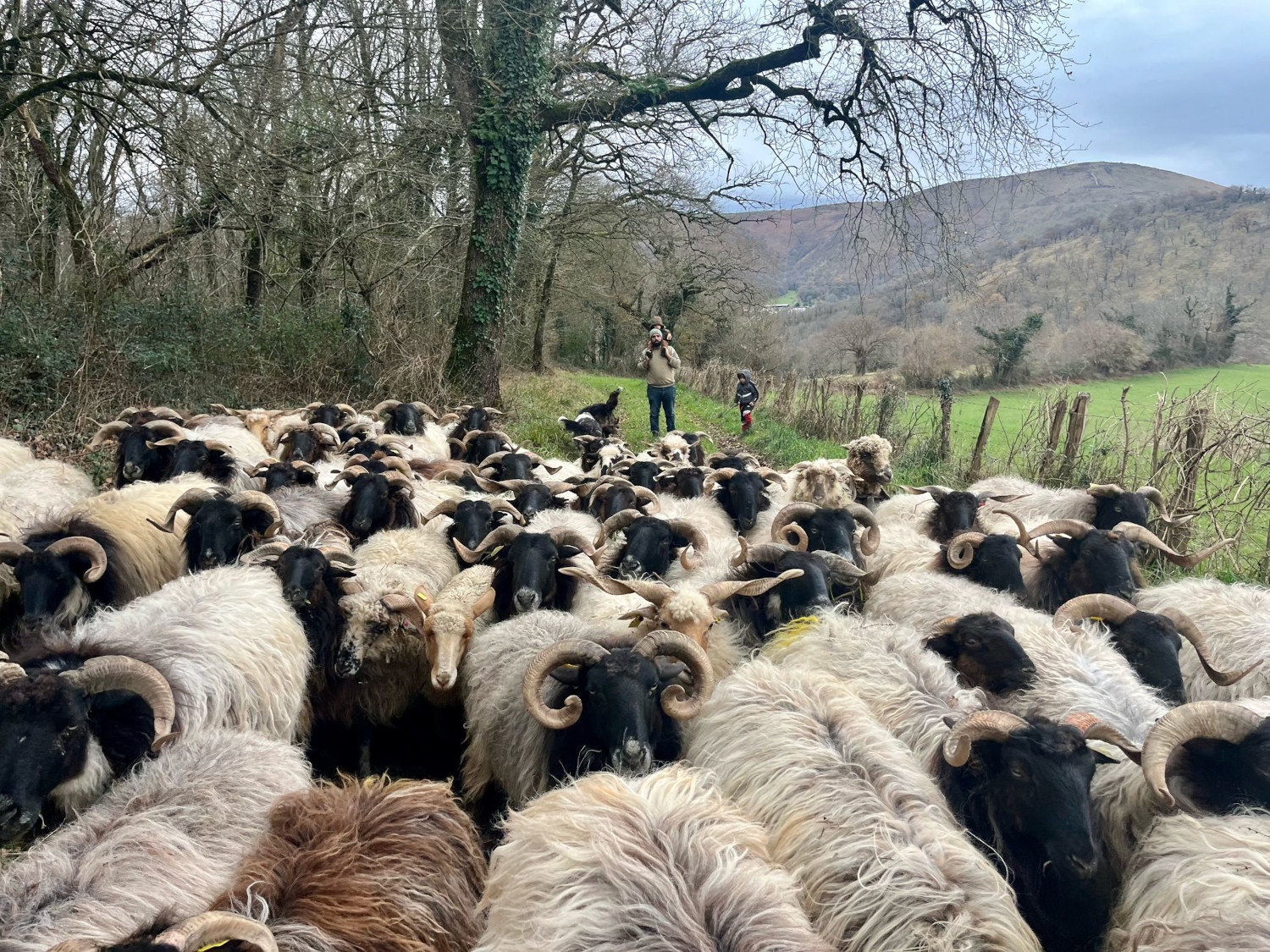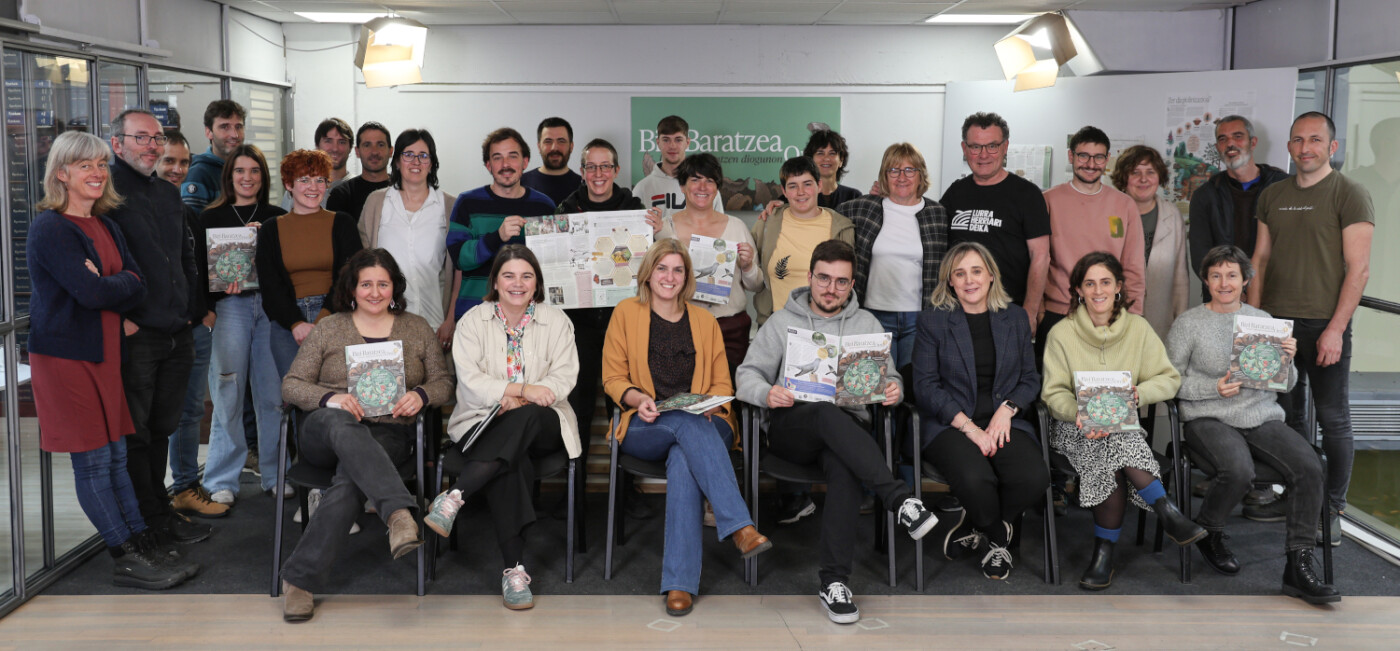What if the climate solution also existed in the forests and the marshes?
- The Congress on Biodiversity COP16, to be held at the end of October in Cali (Colombia), can be a milestone, as it aims to put for the first time the loss of ecosystems at the level of CO2 emissions and global warming problems. But when was it no longer the case?

We have been told that in Gipuzkoa they will also start putting counters in the water that comes from the mountain, and it has not surprised us. In the elbows the shields appear, says the saying. In the anthropogenic times in which we live, water becomes increasingly uncontrollable, if we do not look at what happened in central Europe with storm Boris: it has burst the roads and left precipitation “uncommon”. At least 23 people have died in the shipwreck, in the northeast of the country. The rains of September in West Africa have passed us much quieter, even though the floods in Nigeria, Liberia and Mali have caused more than a thousand deaths and millions of displaced persons.
Now it rains, then they dried up. The alert has been issued for a long time and more and more relate these changes in the water cycle to the loss of biodiversity. It is so clear that the organizers of COP16 have put the issue at the heart of the debate.
COP16 and the other side of the coin
“Humanity has to understand a double movement. The first is to decarbonize and achieve a just energy transition. The other side of the coin is that we must restore nature and restore its ability to stabilise the climate. There's a lot of consciousness and political investment with the climate, but we're not seeing that other side of the coin, and it's dangerous. Dangerous for humanity.” The Colombian Minister for the Environment, Susana Muhamad, has spoken in the presentation of the congress.
Muhamad, who had a Palestinian grandfather, was born in Bogotá 47 years ago. Expert and environmental expert – worked as an advisor to the company Shell until she left her tired of fracking – was the city’s Environment Secretary during the implementation of the Zero Waste System (Zero Zabor). Gustavo Petro was then mayor. Muhamad has been in the left-wing government of Petro in Colombia since 2022, and has promoted anti-fracking and anti-resettlement laws in the Amazon. He will be the president of COP16.
“Humanity has to understand a double movement. The first is to decarbonize and achieve a just energy transition. The other side of the coin is that we have to restore
nature” Susana Muhamad
From October 21 to November 1, the UN COP16 Congress on Biodiversity is held in Cali, the third largest city in Colombia. A total of 12,000 officials and experts from 192 countries will meet under the slogan “Make peace with nature”.
The biennial conference may not have the same prestige as the COP on climate, but it often poses ambitious challenges. The last time it was done in Montreal, for example, it set the goal of protecting 30% of the planet's surface by 2030, in expression 30x30. It was an agreement for the system to be maintained as it was established, while indigenous peoples denounced that it was the “largest theft of land from Christopher Columbus”.
But this year the congress is different, because far from betting a lot, it wants to bring about a change of perspective. “One of the main purposes of Caliko COP16 is to become a global framework for biodiversity as politically important as the climate agenda,” Muhamad said in the presentation. These words reached the pages of The Guardian and other referential media around the world, as well as the ears of activist and poet Rob Lewis.
.jpg)
Lewis has been proclaiming for years that climate is "more than a machine" and writing about nature. The Climate According to Life has a website for this purpose: “[Muhamad] has spoken rigorously about the ‘double’ nature of the climate,” says the author. I hope that the media will take care of this person and thus work on both sides of the climate coin. For me, that’s a big step in discussing climate issues.”
When referring to the “double” nature of nature, we must understand an idea that some theorists have long had: that the climate emergency has not only been caused by carbon emissions and global warming, but also by the loss of biodiversity and by the water cycle. On this, the ARGIA reader will recall the Larrun supplement we published in January (292. n). Among these theorists, Lewis takes as reference the physicist and engineer Millán Millán, recently deceased last January. He tells his story by writing several articles under the title “Millán Millán and the mystery of missing Mediterranean storms.”
In the mountains of Granada in the storm with the father
Millán Millán Muñoz (Granada, 1941 – Valencia, 2024) accompanied his father in the hunting of partridges, in his childhood, before becoming a prestigious meteorologist, through the Andalusian mountains. And as they walked between dry scrubs, called Maquis, they watched the place where the mists were forming in the morning, to guess where the storm would come down in the afternoon and take the path that would take them home.
.jpg)
This childhood experience was introduced into the shirt of the University of Toronto, Millán, to study Atmospheric Physics. In 1971, a surprising book came to him through his professor, the meteorologist Ted Munn: Inadverment Climate Modification. It was a study on the influence of human beings on climate, published by the prestigious Massachusetts Institute of Technology. It stated that, in addition to greenhouse gases, inadequate land use could alter the climate.
What is more, the book said that, while the greenhouse effect has a slower rate, the natural destruction of the earth has an immediate effect, as the breakdown of the hydrological cycle is noticeable from day to day. This ‘two-legged’ view of climate change – atmospheric (carbon) and terrestrial (water) – was common among scientists at the time, and Millán also supported this when European Commission officials asked him to clarify why summer storms disappeared in the Mediterranean basin.
.jpg)
The mystery of the summer storms in the Mediterranean
Said and done. He and his research team worked for years in the southern Mediterranean of Spain. To do this, aerostatic balloons, meters and 50 weather towers were used, taking into account what grandparents said as “critical data”: who would know better the time than them? I closed at seven, solano at ten, water at three (I closed at seven, water at three), they heard the expression once to an old man.
Millán concluded that the water that clouds need to explode not only gets it out of the sea, but also from the marshes and forests on the coast. The problem is that the Mediterranean coast is totally desolate and dried out since the
tourist boom
Millán concluded that the water needed by the fogs is not only taken from the sea, but also from the marshes and forests on the coast. “Water generates water, the earth has a uterus and the vegetation is female …”, the grenade said, as a sign of its poetic sense. The problem is that the Mediterranean coast is totally desolate and dried with forest since the tourist boom. Storms do not erupt in the mountain and water accumulates in a wider atmospheric layer, until elsewhere and at an age of the year it collapses from terrible violence -- for example in central Europe. Do you know this?
But in the 1990s, when he was the director of the Mediterranean Environmental Research Center, as soon as he started disseminating the research results, he only found coldness. Millán said that his theory was “uncomfortable” for the scientific community because the vision of “two legs” was no longer taken into account. Unlike two decades earlier, the “paw” of the earth was abandoned. What happened during that time?
.jpg)
Intelligent living landscapes
Before, the clouds that broke the storms carried 21 grams of water per cubic meter of water. If the winds of the sea contributed 14 grams, where did the remaining 7 grams come from? They were on the coast by marshes and forests.
Now, because of the destruction of the earth, the amount of water doesn't reach 20 grams, the storm doesn't explode, and the water vapor "recycle" it in higher layers to throw it further away and by force.
Then, with the recovery of forests and marshes and the creation of greener cities, Millán’s proposal was to return to the previous situation.
When the earth is healthy, the microbial community accumulates more moisture. So, in addition to the water vapor, microscopic biota come out of the vegetation, which helps accelerate condensation so that the sky returns the rain to the earth.
How did they exclude biodiversity from the equation?
According to Rob Lewis, divorce occurred in 1979. That same year, the US Government commissioned a report on CO2 emissions from US mathematician Jules Charney. He brought together a group of experts at the Cape Woods Hole (Massachusetts, EE.UU. And after a lot of simulations, they created the mathematical model of weather forecasting today. Thus, it was determined that if CO2 emissions were doubled, the temperature would rise to +3Cº worldwide.
Experts gathered at Woods Hole in 1979 determined that a doubling of CO2 emissions would increase
the temperature by +3º: “It was a bombshell, the headline that drew the attention of the media”
“It was a bombshell,” says Lewis-. The media had a headline that drew attention, the interests of the oil tankers were aligned on the one hand and the ecologists on the other.” From there, public opinion echoed that carbon emissions were the only cause of climate change and the Intergovernmental Group of Experts (IPCC) has been pushing it since. In addition, the story came right to the political class: it was easier for them to oppose a long-term global phenomenon such as the “predictable” carbon cycle than to explain a much more complex water cycle – and more harmful to the construction and tourism industries.
“To be clear, this does not mean that we do not have to drastically lower carbon emissions. But it puts the CO2 crisis in the context of another crisis: the human destruction of the biosphere. The two legs are not opposing, they are attached to a body, tied to the Earth,” Lewis concludes his article.
small water cycle recovery

Millán Millán said that “we must plant storms.” One of his last lectures took place at the Casa de la Ciencia de Valencia, a few weeks before his death: “People are treating the disease. I've been through Covida and I know it's hard, but the question is, why don't you solve the problem before? The problem of climate change is not CO2, it's just one of the problems -- the problem of climate change is water vapor. All this heat you see now is not CO2, but water vapor,” the physicist said.
At this conference, Millán recalled that in the Chinese desert of Loes a small cycle of water has been recovered through restocking. Here's your message to the public: “The water is no longer there, but it can be put back.” Will the authorities going to COP16 heed you?























